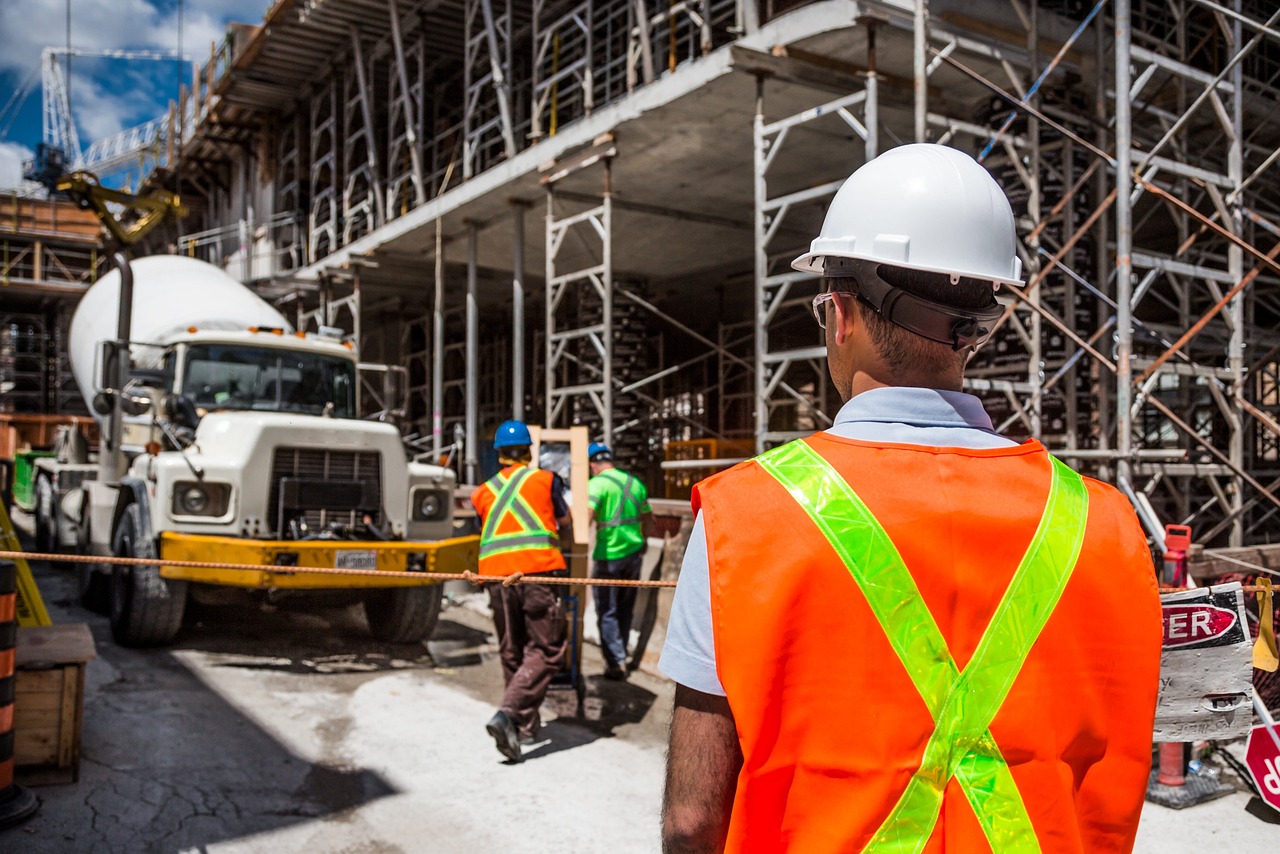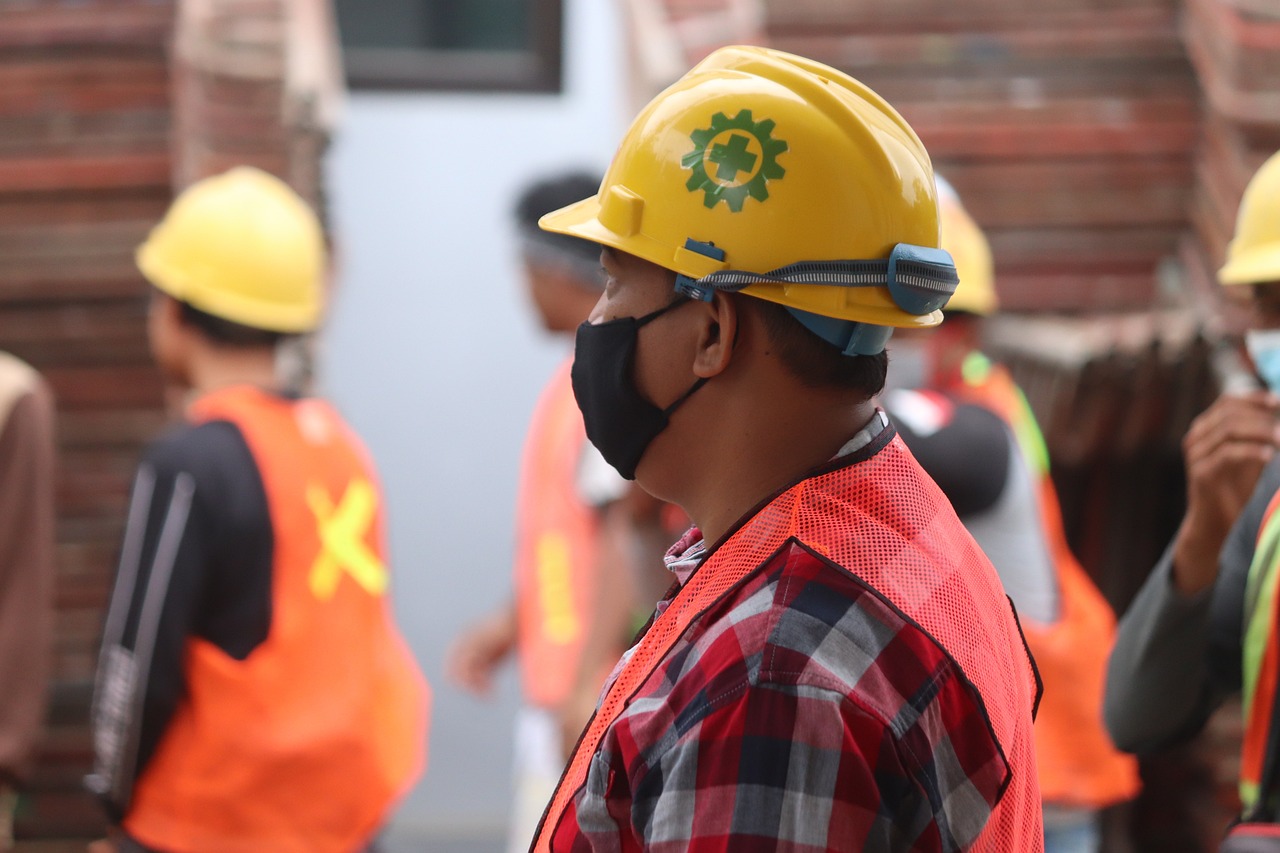Human Behavior: A Vital Ingredient in Safety Measures
In today's fast-paced world, the importance of safety cannot be overstated. Whether in a bustling office, a construction site, or even at home, human behavior plays a pivotal role in shaping safety measures. Understanding how people think, perceive risks, and react in various situations can significantly enhance safety protocols. This article dives deep into the intricate relationship between human behavior and safety, shedding light on psychological factors that can make or break safety initiatives.
When we talk about safety, it's not just about rules and regulations; it's about the psychological aspects that drive compliance. Understanding how individuals perceive safety can help organizations tailor their measures effectively. For instance, if employees believe that safety protocols are unnecessary, they are less likely to follow them. This perception can stem from a variety of factors, including past experiences, cultural influences, and personal beliefs. By addressing these psychological barriers, organizations can foster a culture of safety that resonates with their employees.
Culture is like the air we breathe; it shapes our thoughts and actions, often without us even realizing it. In the context of safety, cultural norms can significantly impact how individuals prioritize safety measures in the workplace. For example, in some cultures, a more hierarchical structure may lead to strict adherence to safety protocols, while in others, a more egalitarian approach may encourage open discussions about safety concerns. Understanding these cultural differences is crucial for global organizations that operate across various regions. By recognizing and respecting these cultural nuances, companies can implement safety measures that are more likely to be embraced by their workforce.
Risk perception is a fascinating area of study, as it delves into how individuals assess potential dangers and make decisions accordingly. Consider this: when faced with a risky situation, some people might freeze, while others may leap into action. This variability can be influenced by numerous factors, including past experiences, personality traits, and even the context of the situation. It's essential for organizations to understand these differences, as they can lead to vastly different outcomes in terms of safety. By fostering an environment where employees feel empowered to voice their concerns and make informed decisions, organizations can significantly enhance their safety compliance.
Have you ever heard someone say, "It won't happen to me"? This is a classic example of overconfidence bias, where individuals believe they are less likely to experience negative events compared to others. This bias can lead to unsafe behaviors, as people might take unnecessary risks, thinking they are invulnerable. In safety-critical environments, such as construction sites or laboratories, this mindset can have dire consequences. It's crucial for organizations to address this bias through awareness campaigns and training programs that highlight the importance of humility and caution in safety practices.
Effective training is like a compass guiding employees toward safe practices. Tailored training programs can significantly enhance safety awareness and compliance among workers. When employees are equipped with the right knowledge and skills, they are more likely to recognize hazards and respond appropriately. Moreover, engaging training methods, such as interactive workshops or simulations, can leave a lasting impression, making safety a priority in their daily routines. In essence, investing in comprehensive training is not just a checkbox for compliance; it's a vital strategy for cultivating a safety-first culture.
Humans are inherently social beings, and our behaviors are often influenced by those around us. Social dynamics play a crucial role in compliance with safety measures. For instance, if the majority of a team adheres to safety protocols, others are likely to follow suit due to peer pressure. Conversely, if a few individuals disregard safety rules, it can create a ripple effect, leading to a culture of non-compliance. Organizations must recognize these social influences and foster a supportive environment where safety is a shared responsibility. Encouraging open dialogue and teamwork can significantly enhance overall safety compliance.
In an age where technology permeates every aspect of our lives, it's no surprise that it also plays a significant role in enhancing safety behaviors. From safety apps to advanced monitoring systems, technology can provide real-time insights that help individuals and organizations make informed decisions about safety. By leveraging these tools, organizations can create a proactive safety culture that emphasizes awareness and compliance. The integration of technology into safety protocols not only streamlines processes but also empowers employees to take ownership of their safety.
Imagine having a personal safety assistant in your pocket at all times. That's the power of safety apps! These innovative tools are revolutionizing how individuals and organizations approach safety. With features like real-time monitoring, instant reporting, and communication channels, safety apps can significantly promote safer behaviors. They enable employees to report hazards immediately, receive alerts about potential dangers, and access safety resources at their fingertips. Embracing this technology can lead to a more informed and vigilant workforce.
Virtual reality (VR) is not just for gaming anymore; it's making waves in safety training too! By offering immersive training experiences, VR can effectively simulate hazardous situations, allowing individuals to practice their responses in a safe environment. This hands-on approach helps participants build confidence and competence, preparing them to react appropriately in real-life scenarios. As organizations look for innovative ways to enhance their training programs, VR stands out as a game-changer in promoting safety awareness and preparedness.
- What is the role of human behavior in safety measures?
Human behavior significantly influences safety compliance and risk assessment. Understanding psychological factors can help organizations tailor their safety protocols effectively.
- How do cultural influences affect safety behavior?
Cultural norms shape how individuals prioritize safety measures, which can vary widely across different regions and organizations.
- What is overconfidence bias, and how does it impact safety?
Overconfidence bias leads individuals to underestimate risks, potentially resulting in unsafe behaviors, especially in critical environments.
- How can technology improve safety behavior?
Technology, such as safety apps and real-time monitoring systems, can enhance awareness and compliance with safety protocols.

The Psychology of Safety
When we think about safety, we often picture hard hats, safety goggles, and warning signs. But what about the human mind? The psychology of safety dives deep into how our thoughts, feelings, and perceptions shape our behaviors in environments where safety is paramount. It's fascinating to realize that our understanding of safety isn't just about following rules; it's also about how we perceive risks and respond to them. Have you ever wondered why some people take safety protocols seriously while others seem to ignore them? The answer lies in the intricate workings of human psychology.
One of the key aspects of safety psychology is risk perception. This refers to how individuals assess potential hazards and the likelihood of negative outcomes. For instance, someone who has experienced a workplace accident may develop a heightened sense of caution, while another person who has never faced such an incident might underestimate risks. This discrepancy can lead to varying levels of compliance with safety measures. Understanding these psychological factors allows organizations to tailor their safety protocols, making them more effective and relatable to their employees.
Moreover, our emotional responses to safety can significantly influence our behaviors. Fear, for example, can be a powerful motivator. When individuals feel threatened, they are more likely to adhere to safety guidelines. On the flip side, overconfidence can lead to reckless behavior, as people may believe they are invulnerable to accidents. This phenomenon, known as the overconfidence bias, can be particularly dangerous in high-risk environments. It’s a bit like thinking you can ride a bike without a helmet because you’ve never fallen before—until one day, you do.
Additionally, the concept of social proof plays a crucial role in shaping safety behaviors. Humans are inherently social creatures, and we often look to others to gauge what is acceptable behavior. If a person observes their colleagues disregarding safety protocols, they may feel inclined to do the same, thinking, “If they aren’t worried, why should I be?” This highlights the importance of fostering a culture of safety within organizations. Leaders must model safe behaviors and encourage open discussions about safety concerns, creating an environment where everyone feels responsible for their own and their colleagues' safety.
To effectively enhance safety compliance, organizations can implement tailored training programs that address these psychological factors. By educating employees about the importance of risk perception, emotional responses, and social dynamics, companies can cultivate a workforce that is more attuned to safety protocols. Training sessions can include interactive discussions, role-playing scenarios, and real-life examples to engage employees and reinforce the significance of safety in their daily tasks.
In conclusion, understanding the psychology of safety is not just an academic exercise; it’s a vital component in creating effective safety measures. By recognizing how human behavior influences safety compliance, organizations can develop strategies that resonate with their employees. It's about shifting the mindset from merely following rules to genuinely valuing safety as a shared responsibility. So, the next time you don your hard hat, remember that your mind plays a critical role in keeping you and your colleagues safe.
- What is risk perception? Risk perception refers to how individuals assess potential hazards and their likelihood of negative outcomes.
- How does overconfidence affect safety? Overconfidence can lead individuals to underestimate risks, resulting in unsafe behaviors.
- Why is social proof important in safety compliance? Social proof influences behavior; if employees see others ignoring safety protocols, they may feel compelled to do the same.
- How can organizations improve safety training? Organizations can enhance safety training by addressing psychological factors and using interactive methods to engage employees.

The way people perceive and prioritize safety is deeply influenced by their cultural backgrounds. Different cultures have unique values, beliefs, and practices that shape how individuals approach safety measures in their personal and professional lives. For instance, in some cultures, safety may be viewed as a collective responsibility, while in others, it might be seen as an individual concern. This divergence can lead to significant implications for organizations operating globally, as they must navigate these cultural nuances to effectively implement safety protocols.
Take, for example, the concept of risk-taking. In cultures that encourage innovation and risk-taking, employees might be more inclined to engage in behaviors that could compromise safety, believing that the potential rewards outweigh the risks. Conversely, cultures that prioritize caution and thoroughness may foster an environment where safety is paramount, and individuals are less likely to take unnecessary risks. This difference can create challenges for multinational companies, as they strive to create a uniform safety culture across diverse locations.
Moreover, communication styles play a critical role in safety behavior. In high-context cultures, where communication is often indirect and relies heavily on non-verbal cues, safety messages may not be as effectively conveyed. Employees might misinterpret safety instructions or fail to express concerns due to a reluctance to confront authority. In contrast, low-context cultures, which favor direct communication, may encourage more open discussions about safety issues, leading to a more proactive approach to risk management.
To illustrate the impact of cultural influences on safety behavior, consider the following table that summarizes key cultural dimensions and their implications for safety practices:
| Cultural Dimension | High Context Cultures | Low Context Cultures |
|---|---|---|
| Communication Style | Indirect, relies on context | Direct, explicit |
| Approach to Risk | More risk-averse, cautious | More risk-taking, innovative |
| Responsibility for Safety | Collective responsibility | Individual responsibility |
Understanding these cultural dimensions is vital for organizations aiming to foster a strong safety culture. By recognizing and respecting cultural differences, companies can tailor their safety training and communication strategies to better resonate with their diverse workforce. For example, implementing culturally sensitive training programs that consider local customs and communication styles can enhance employee engagement and compliance with safety measures.
Furthermore, organizations can benefit from encouraging a culture of feedback and open dialogue about safety concerns. By creating an environment where employees feel comfortable sharing their thoughts and experiences, companies can harness the collective wisdom of their diverse teams, leading to improved safety outcomes. Ultimately, the interplay between culture and safety behavior is complex, but by prioritizing cultural awareness, organizations can significantly enhance their safety protocols and create a safer workplace for everyone.
- How do cultural differences affect safety training?
Cultural differences can influence how safety training is perceived, understood, and implemented. Tailoring training to fit cultural contexts can enhance its effectiveness. - What role does communication play in safety behavior?
Effective communication is crucial for conveying safety messages. Understanding cultural communication styles can help organizations deliver clearer and more impactful safety instructions. - Can cultural awareness improve safety compliance?
Yes, by fostering cultural awareness, organizations can create a more inclusive environment that encourages compliance with safety measures.

When it comes to safety, risk perception is like the lens through which we view the world around us. It shapes our decisions and influences our behavior in ways that can either protect us or put us in harm's way. Imagine walking down a busy street; your brain is constantly assessing the risks of crossing the road, the speed of oncoming cars, and the potential for accidents. This internal assessment isn't just a random occurrence; it's a complex interplay of psychological factors that can significantly impact safety.
At its core, risk perception involves an individual’s assessment of the likelihood and severity of potential dangers. It's fascinating how this perception can vary widely from person to person. For example, one individual might perceive a particular work environment as safe, while another sees it as fraught with danger. This discrepancy can lead to differing behaviors regarding safety compliance. Why does this happen? Well, it often boils down to personal experiences, cultural influences, and even media portrayals of risks.
Furthermore, our decision-making processes are heavily influenced by how we perceive risks. When faced with a choice, we weigh the potential outcomes based on our perceived likelihood of success or failure. This can lead to overconfidence in our abilities, causing us to underestimate risks. For instance, a seasoned worker might feel invincible and ignore safety protocols, thinking, “I’ve done this a hundred times, what could possibly go wrong?” This kind of thinking can have dire consequences, especially in high-risk environments.
To illustrate how risk perception affects decision-making, consider the following table that summarizes key factors influencing risk perception:
| Factor | Description |
|---|---|
| Personal Experience | Previous encounters with risks shape how individuals perceive and react to similar situations in the future. |
| Cultural Background | Cultural norms dictate what is considered safe or risky, leading to differences in safety behavior across regions. |
| Information Availability | Access to information about risks can enhance awareness and influence decision-making. |
| Emotional Response | Fear or anxiety can skew perception, leading to either overestimation or underestimation of risks. |
In addition to these factors, the role of social dynamics cannot be overlooked. Peer influence often plays a crucial role in shaping how individuals assess risks and make decisions. If you’re part of a team where safety is taken seriously, you’re more likely to adopt a cautious approach. Conversely, if your colleagues disregard safety protocols, you might find yourself doing the same, even if you initially perceived the risks differently.
In conclusion, understanding risk perception is vital for enhancing safety measures. By recognizing the psychological factors that influence decision-making, organizations can tailor their safety protocols to better align with how individuals perceive risks. This not only promotes a safer environment but also fosters a culture of safety that encourages everyone to take responsibility for their own well-being and that of others.
- What is risk perception? Risk perception is the subjective judgment that people make about the characteristics and severity of a risk.
- How does risk perception influence decision-making? It affects how individuals assess potential dangers and the choices they make regarding safety measures.
- Can training improve risk perception? Yes, effective training can enhance awareness and understanding of risks, leading to better decision-making.
- Why is understanding social dynamics important for safety? Social dynamics influence individual behavior, and understanding these can help organizations foster a culture of safety compliance.

Overconfidence bias is a fascinating yet dangerous psychological phenomenon that can significantly impact safety in various environments. Imagine a skilled driver who believes they are invincible behind the wheel, disregarding speed limits or safety regulations. This inflated self-assurance can lead to risky behaviors that jeopardize not only their safety but also the safety of others. In safety-critical settings, such as construction sites or manufacturing plants, overconfidence can manifest in several ways, from ignoring proper safety protocols to underestimating the risks associated with certain tasks.
One of the key issues with overconfidence is that it often blinds individuals to the reality of their situation. For instance, research shows that people frequently overestimate their abilities, believing they can handle hazardous situations without the necessary precautions. This can create a false sense of security, leading individuals to take unnecessary risks. In fact, a study conducted by the National Institute for Occupational Safety and Health (NIOSH) found that workers who exhibited overconfidence were more likely to engage in unsafe practices, putting themselves and their coworkers at risk.
To illustrate the impact of overconfidence bias, let’s consider a few scenarios:
- Construction Workers: A worker may believe they can operate heavy machinery without proper training, leading to accidents and injuries.
- Healthcare Professionals: A doctor might skip essential safety protocols, thinking their experience makes them immune to errors, potentially compromising patient safety.
- Office Environments: An employee may ignore ergonomic guidelines, believing they can work long hours without consequence, leading to chronic health issues.
These examples highlight how overconfidence can permeate various sectors, leading to a culture where safety is compromised. Addressing this bias is crucial for enhancing safety protocols. Organizations can implement several strategies to mitigate overconfidence:
- Awareness Training: Educating employees about the dangers of overconfidence and encouraging self-reflection can help them recognize their limitations.
- Regular Assessments: Conducting frequent evaluations of skills and knowledge can provide a reality check and reinforce the importance of adhering to safety measures.
- Peer Feedback: Creating an environment where team members can provide constructive feedback to one another can help curb overconfidence and promote a culture of safety.
Ultimately, recognizing and addressing overconfidence bias is essential for fostering a safe working environment. By encouraging individuals to acknowledge their limitations and adhere to established safety protocols, organizations can significantly reduce the risk of accidents and injuries. Remember, safety is not just about following rules; it’s about cultivating a mindset that prioritizes caution and awareness. After all, in the world of safety, a dose of humility can go a long way!
Q: What is overconfidence bias?
A: Overconfidence bias is a psychological tendency where individuals overestimate their abilities or knowledge, often leading to risky behaviors, especially in safety-critical situations.
Q: How can organizations mitigate overconfidence bias?
A: Organizations can mitigate overconfidence bias through awareness training, regular skills assessments, and fostering an environment that encourages peer feedback.
Q: Why is it important to address overconfidence in safety?
A: Addressing overconfidence is crucial because it helps prevent accidents and injuries by ensuring individuals recognize their limitations and adhere to safety protocols.

Training is more than just a box to check; it’s a transformative experience that can significantly influence behaviors in safety-critical environments. Think of training as the spark that ignites a fire of awareness and compliance among employees. When organizations invest in effective training programs, they are not just teaching skills; they are reshaping mindsets and fostering a culture of safety. This is crucial because, as we know, human behavior plays a pivotal role in ensuring safety protocols are followed.
Imagine walking into a workplace where everyone is aware of the safety measures in place and actively engages in them. This scenario is not just a dream; it can be a reality through well-structured training programs. Such training should not only focus on the 'how' of safety procedures but also delve into the 'why.' Understanding the reasons behind safety protocols can lead to greater compliance. Employees who grasp the importance of safety measures are more likely to embrace them wholeheartedly, reducing risks and enhancing overall workplace safety.
Moreover, training should be tailored to meet the specific needs of the workforce. A one-size-fits-all approach often falls flat. By assessing the unique challenges and risks associated with different roles, organizations can create customized training sessions that resonate with employees. This not only enhances engagement but also ensures that the training is relevant and practical. For example, a construction site will have different safety protocols compared to an office environment, and training should reflect these differences.
Another critical aspect is the delivery method of training. Traditional training methods, such as lectures and presentations, can often lead to disengagement. Instead, incorporating interactive elements such as role-playing, simulations, and hands-on practice can make a significant difference. These methods allow employees to experience real-life scenarios in a controlled environment, thus preparing them to respond effectively when faced with actual hazards.
To illustrate the impact of training on behavior, consider the following table that summarizes key training methods and their effects on safety behavior:
| Training Method | Impact on Safety Behavior |
|---|---|
| Interactive Workshops | Boosts engagement and allows for practical application of safety protocols. |
| Online Training Modules | Provides flexibility and accessibility, catering to diverse learning styles. |
| On-the-Job Training | Offers real-time experience, reinforcing safe practices in actual work environments. |
| Simulations and VR Training | Creates immersive experiences that prepare employees for high-risk situations without real-world consequences. |
Furthermore, ongoing training and refresher courses are essential in maintaining safety standards. Just like a muscle, safety awareness needs to be exercised regularly. Organizations should encourage a culture of continuous learning where employees feel empowered to update their skills and knowledge. This not only keeps safety at the forefront but also fosters a sense of responsibility among team members.
In conclusion, the impact of training on behavior cannot be overstated. It is the foundation upon which a culture of safety is built. By investing in comprehensive, engaging, and relevant training programs, organizations can significantly enhance safety compliance and reduce the likelihood of accidents. After all, when employees feel competent and confident in their safety knowledge, they are more likely to act in ways that protect themselves and their colleagues.
- What is the primary goal of safety training? The primary goal of safety training is to equip employees with the knowledge and skills necessary to identify hazards and respond appropriately to ensure a safe working environment.
- How often should safety training be conducted? Safety training should be conducted regularly, with refresher courses at least annually, and more frequently for high-risk environments.
- Can training really change behavior? Yes, effective training can lead to lasting changes in behavior by increasing awareness, knowledge, and skills related to safety practices.
- What are some effective training methods? Some effective training methods include interactive workshops, on-the-job training, online modules, and simulations.

The interplay between social dynamics and safety compliance is a fascinating yet complex aspect of human behavior. Imagine a workplace where everyone is committed to safety; it creates a culture where compliance is not just a rule but a shared value. However, this ideal scenario is often disrupted by various social influences, such as peer pressure and groupthink. These dynamics can either bolster or undermine safety practices, leading to significant consequences. For instance, if a team member sees their peers ignoring safety protocols, they may feel compelled to follow suit, believing that conformity is more important than safety. This phenomenon highlights how the behavior of others can heavily influence individual choices, often leading to a domino effect that compromises the overall safety of the workplace.
To understand this better, consider the concept of group dynamics. In a team setting, individuals often look to their peers for cues on how to behave. If the prevailing attitude is one of disregard for safety measures, even the most safety-conscious individuals may start to question their own adherence to protocols. This is particularly prevalent in high-stakes environments where the pressure to perform can overshadow safety concerns. It’s like being in a crowded theater where everyone is rushing for the exit; the instinct to follow the crowd can lead to chaos and, ultimately, danger.
Furthermore, social identity plays a crucial role in shaping safety behaviors. When individuals identify strongly with their team, they may prioritize group norms over personal safety. This can be particularly dangerous in industries where safety compliance is critical. For example, in construction, if a worker perceives the group as valuing speed over safety, they might be less likely to wear protective gear. This tendency to conform can be exacerbated by leadership styles as well. Leaders who prioritize performance metrics over safety can inadvertently send the message that compliance is secondary, thus further embedding unsafe behaviors within the team culture.
To combat these negative influences, organizations must foster an environment where open communication and safety are prioritized. Encouraging employees to voice their concerns without fear of repercussion can create a culture of accountability. Regular safety meetings, where team members can share experiences and suggestions, can also reinforce the importance of compliance. Additionally, recognizing and rewarding safe behaviors can create a positive feedback loop, encouraging others to follow suit. It’s essential to create a space where safety is seen as a collective responsibility rather than an individual obligation.
In summary, the dynamics of social interaction play a significant role in shaping safety compliance. By understanding and addressing these influences, organizations can create a culture that prioritizes safety, ultimately leading to a safer working environment for everyone involved. The question remains: how can we leverage these social dynamics to enhance safety compliance? The answer lies in fostering a culture of safety that values every voice and promotes collective responsibility.
- What are social dynamics in the context of safety compliance?
Social dynamics refer to how individuals interact and influence each other's behaviors, particularly regarding adherence to safety protocols. - How can peer pressure impact safety behaviors?
Peer pressure can lead individuals to conform to unsafe practices if they see their colleagues disregarding safety measures. - What role does leadership play in promoting safety compliance?
Leaders set the tone for safety culture; their prioritization of safety over performance can encourage compliance among team members. - How can organizations improve safety compliance?
Organizations can improve compliance by fostering open communication, conducting regular safety meetings, and rewarding safe behaviors.

In today's fast-paced world, technology has become a cornerstone in enhancing safety behaviors across various industries. With the rise of innovative tools and systems, organizations are now able to address safety protocols more efficiently than ever before. Imagine a workplace where potential hazards are identified and mitigated in real-time, where employees are equipped with the knowledge and tools to ensure their safety and that of their colleagues. This is not just a dream; it is a reality made possible through technology.
One of the most significant advancements in this realm is the development of real-time monitoring systems. These systems utilize sensors and IoT (Internet of Things) devices to track environmental conditions and employee activities. For instance, in a manufacturing plant, sensors can detect hazardous conditions such as gas leaks or excessive heat. When these risks are identified, alerts are sent out immediately, allowing for prompt action. This proactive approach not only enhances safety but also fosters a culture of vigilance among employees.
Moreover, the integration of safety applications has transformed how organizations manage safety protocols. These apps serve as a comprehensive platform for reporting incidents, tracking safety training, and disseminating critical safety information. Employees can easily access safety guidelines, report near misses, or even receive reminders about safety drills. By empowering individuals with the right tools, organizations can create an environment where safety is prioritized, and everyone feels responsible for their own well-being.
Another groundbreaking technology is virtual reality (VR). This immersive training tool allows employees to engage in realistic simulations of hazardous situations without the actual risks. For instance, a construction worker can practice navigating a high-rise building site in a virtual environment, learning how to identify potential dangers and respond appropriately. This hands-on experience not only builds confidence but also enhances retention of safety protocols, making it more likely that employees will apply what they’ve learned in real-life scenarios.
As we delve deeper into the impact of technology on safety behavior, it’s essential to consider the role of data analytics. By analyzing trends and patterns in safety incidents, organizations can identify areas that require improvement. This data-driven approach enables companies to tailor their safety programs based on actual risks, rather than relying on generic policies. By understanding the specific challenges their workforce faces, organizations can implement targeted interventions that significantly reduce the likelihood of accidents.
In summary, technology is not just an accessory in the realm of safety; it is a vital ally. By leveraging tools such as real-time monitoring systems, safety applications, and virtual reality training, organizations can create a robust safety culture that prioritizes the well-being of every individual. As we continue to innovate and embrace new technologies, the future of workplace safety looks brighter than ever.
- How can technology improve safety compliance?
Technology can enhance safety compliance by providing real-time data, facilitating communication, and offering immersive training experiences that engage employees. - What role does virtual reality play in safety training?
Virtual reality allows employees to practice safety protocols in a controlled environment, helping them prepare for real-life situations without the associated risks. - Are safety apps effective in promoting safety behaviors?
Yes, safety apps can significantly improve safety behaviors by providing easy access to guidelines, enabling incident reporting, and fostering a culture of accountability.

In an age where technology is intertwined with every aspect of our lives, safety apps have emerged as powerful tools that revolutionize how we approach safety in various environments. Imagine having a personal safety assistant right in your pocket, ready to alert you of potential dangers or provide immediate assistance in emergencies. This is not just a fantasy; it's the reality that safety apps bring to the table. These applications are designed to enhance awareness and compliance with safety protocols, making our environments significantly safer.
One of the most critical features of safety apps is their ability to provide real-time monitoring. This means that users can receive instant updates about their surroundings, ensuring they are always informed about potential hazards. For instance, in workplaces where heavy machinery operates, safety apps can monitor equipment status and alert workers about malfunctions or unsafe conditions. This proactive approach not only prevents accidents but also fosters a culture of safety awareness among employees.
Moreover, many safety apps come equipped with features such as emergency alerts, GPS tracking, and communication tools that connect users with emergency services. Imagine being in a situation where you feel unsafe; with just a few taps on your smartphone, you can send your location and a distress signal to your contacts or local authorities. This immediacy can be a game-changer, potentially saving lives by ensuring help arrives quickly.
To illustrate the impact of safety apps, consider the following table that highlights some popular safety applications and their key features:
| App Name | Key Features | Platform |
|---|---|---|
| SafeTrek | Emergency alerts, GPS tracking | iOS, Android |
| Life360 | Family location sharing, driving safety | iOS, Android |
| Red Panic Button | Instant SOS alerts, location sharing | iOS, Android |
| My Safetipin | Safety audits, location ratings | iOS, Android |
As we delve deeper into the realm of safety apps, it's essential to recognize the role of user engagement in maximizing their effectiveness. The best safety apps are not just tools; they are part of a larger safety ecosystem that includes training and awareness. Users must be educated on how to utilize these apps effectively to ensure they are prepared for any situation. This is where the synergy between technology and human behavior comes into play. When individuals understand the capabilities of their safety apps, they are more likely to use them consistently and correctly.
In summary, safety apps and real-time monitoring are reshaping how we perceive and implement safety measures. By leveraging technology, we can create environments that are not only safer but also more responsive to the needs of individuals. As we continue to embrace these advancements, it's crucial to remain vigilant and proactive in our approach to safety, ensuring that we utilize every tool at our disposal to protect ourselves and those around us.
- What are safety apps? Safety apps are mobile applications designed to enhance personal safety and security by providing features such as emergency alerts, GPS tracking, and real-time monitoring.
- How do safety apps work? Safety apps utilize GPS and internet connectivity to provide users with real-time information about their surroundings and allow them to communicate with emergency services or contacts in case of danger.
- Are safety apps effective? Yes, safety apps can be highly effective when used correctly. They provide immediate alerts and assistance, which can significantly reduce response times in emergencies.
- Can safety apps replace traditional safety measures? While safety apps are valuable tools, they should complement traditional safety measures rather than replace them. A comprehensive safety strategy includes both technology and human awareness.

In today’s fast-paced world, where safety is paramount, Virtual Reality (VR) training is emerging as a groundbreaking solution that transforms how we prepare for hazardous situations. Imagine being able to step into a fully immersive environment where you can experience real-life scenarios without any actual risk. That’s the power of VR! It allows individuals to practice their responses to emergencies, learn safety protocols, and develop critical skills in a controlled setting. This innovative approach not only enhances learning but also significantly boosts retention rates compared to traditional training methods.
One of the most appealing aspects of VR training is its ability to replicate high-stress environments. For instance, consider a firefighter training scenario. In a virtual world, trainees can face simulated fires, smoke, and rescue operations, all while receiving real-time feedback on their performance. This hands-on experience is invaluable as it prepares them for the unpredictability of actual emergencies. Furthermore, VR training can be tailored to different industries, from construction to healthcare, ensuring that the specific safety protocols relevant to each field are effectively covered.
But how does this technology actually work? At its core, VR training involves the use of specialized headsets and software that create a 3D environment. Participants don these headsets and are transported into a virtual world where they can interact with their surroundings. This interaction can range from simple tasks, like navigating through a space, to complex scenarios that require teamwork and quick decision-making. The immersive nature of VR engages users in a way that traditional training methods simply cannot.
Moreover, VR training is not just about the experience; it also incorporates analytics and assessments. After completing a training module, participants can receive detailed reports on their performance, highlighting areas of strength and opportunities for improvement. This data-driven approach allows organizations to continuously refine their training programs, making them more effective over time. It’s like having a personal coach that helps you get better with every session!
Despite the numerous benefits, some might wonder about the challenges associated with implementing VR training. Initial setup costs can be a concern for many organizations. However, considering the potential reduction in workplace accidents and the subsequent savings on insurance and liability, the investment often pays off in the long run. Additionally, as technology continues to advance, the cost of VR systems is expected to decrease, making this training more accessible.
In conclusion, Virtual Reality training is revolutionizing safety education. By providing an engaging, immersive, and risk-free environment for learning, it equips individuals with the skills they need to handle real-life challenges effectively. As we continue to explore the intersection of technology and safety, it’s clear that VR will play a crucial role in shaping safer workplaces and communities.
- What industries can benefit from VR safety training?
Virtually any industry that involves hazardous environments, including construction, healthcare, manufacturing, and emergency services, can benefit from VR training.
- Is VR training effective for all types of learners?
Yes, VR training caters to various learning styles by providing visual, auditory, and kinesthetic learning opportunities.
- How does VR training compare to traditional training methods?
VR training has been shown to enhance retention rates, engagement, and the ability to apply learned skills in real-life situations compared to traditional methods.
- Are there any risks associated with VR training?
While VR training is generally safe, some individuals may experience motion sickness or discomfort during use. Proper acclimatization and breaks can mitigate these effects.
Frequently Asked Questions
- What is the relationship between human behavior and safety measures?
Human behavior is a critical factor in safety measures. Understanding how individuals perceive risks and make decisions can help organizations design more effective safety protocols. By recognizing the psychological aspects of behavior, companies can tailor their safety measures to encourage compliance and minimize accidents.
- How do cultural influences affect safety behavior in the workplace?
Cultural norms play a significant role in shaping safety behaviors. Different cultures may prioritize safety differently, which can impact how safety measures are implemented and adhered to in global organizations. Recognizing these cultural differences is essential for developing effective safety strategies that resonate with diverse teams.
- What is risk perception and how does it impact decision-making?
Risk perception refers to how individuals assess potential hazards and make choices based on those assessments. It greatly influences decision-making processes, particularly in safety-critical situations. Understanding this concept helps organizations identify why individuals might take risks or comply with safety protocols.
- What is overconfidence bias and how does it affect safety?
Overconfidence bias occurs when individuals overestimate their abilities or knowledge, leading to unsafe behaviors. This bias can manifest in various ways, such as ignoring safety protocols or underestimating risks. Awareness of this bias is crucial for promoting a safety culture that encourages humility and caution.
- How can training improve safety behaviors?
Effective training is key to modifying behaviors positively. Tailored training programs can enhance safety awareness and compliance among employees by providing them with the knowledge and skills needed to recognize and respond to hazards effectively.
- What role do social dynamics play in safety compliance?
Social dynamics, including group dynamics and peer pressure, significantly affect compliance with safety measures. Individuals are often influenced by their peers, which can either encourage safe behaviors or lead to risky practices. Understanding these social influences is important for fostering a culture of safety.
- How does technology enhance safety behaviors?
Advancements in technology, such as safety apps and real-time monitoring systems, can significantly improve safety behaviors. These tools enhance awareness of safety protocols and facilitate better communication, ultimately promoting a safer working environment.
- What are the benefits of using safety apps?
Safety apps offer numerous benefits, including real-time monitoring and communication capabilities. They allow individuals and organizations to report hazards instantly, track compliance, and receive immediate feedback, leading to a more proactive approach to safety.
- How can virtual reality (VR) training improve safety awareness?
Virtual reality training provides immersive experiences that simulate hazardous situations. This type of training prepares individuals to respond safely in real-life scenarios, enhancing their safety awareness and decision-making skills in critical situations.



















